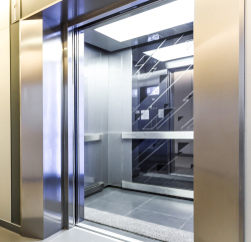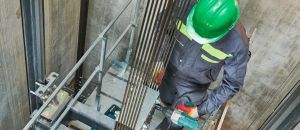It has been said that the elevator is the heart of a building.
Monitoring an elevator’s uptime, then, is tantamount to checking for a pulse. It’s a vital sign that can reveal a lot about the condition of an elevator and the building it operates within.
When elevator uptime is high, it is a strong indicator that the components of the elevator have been well maintained and are performing as intended. This also means tenants are satisfied and routine maintenance is working.
On the flipside, downtime can be a symptom of much larger issues.
If left unchecked, they may require extensive repair, or in some cases, modernization or even full system replacement. Vigilance is key, because small elevator mechanical issues can easily lead to much larger problems and higher costs for building owners down the road.
Elevator Performance

One of the biggest benefits of understanding the importance of elevator uptime is that it can be used to evaluate the current condition of most components and help gauge the elevator’s anticipated lifespan.
Ideally, elevators should reach 99.5% uptime with 0.5% reserved for maintenance. If you are experiencing uptimes that fall below this standard, it’s worth taking a closer look at how your equipment is performing.
Keeping a closer watch on this allows you to catch issues – such as having the elevator doors not open or close correctly – earlier so you can avoid what would otherwise be a simple repair from turning into a major service disruption. This can help keep costs down as the cost of regular maintenance is often lower than having to make emergency repairs or replace a poorly maintained elevator system.
In addition, low uptime ratios can also help confirm whether it’s time to take a more drastic approach to modernize and update elevator components in order to avoid total equipment failure due to prolonged wear and tear.
Tenant Satisfaction and Your Building’s Reputation
Accessibility is a key consideration for building tenants.
Nothing frustrates people more than not being able to access their home or business. While tenants or visitors might not raise concerns about long wait times or malfunctioning doors to building management, they can be pretty vocal with everyone else. Negative word of mouth travels fast and can damage your building’s reputation in the process.
Long wait times can also encourage littering and acts of vandalism, which can further erode a building’s overall appearance and contribute to additional unwanted repair costs.
Further, persistent elevator problems can lead to decreased market value. This is another example of how making small investments that go toward increasing elevator uptime can pay larger dividends for building owners.
Elevator Service Quality

Monitoring uptime can also help you determine how well the elevator service company that you’ve hired is working for you. Are they focusing on preventative maintenance or are they being called back to make the same repairs over and over?
Ongoing maintenance is the best way to maintain optimal performance, catch potential issues early or prevent them entirely.
By focusing on elevator uptime, building owners can work with their elevator service company to limit the number of emergency service calls, avoid poor performance and lower repair costs.
Conclusion
Between maintaining HVAC and plumbing systems, ensuring compliance with security and fire prevention codes and supervising building staff, building owners and managers have a lot of responsibilities to keep track of. Having to constantly worry about elevator performance should not be one of them.
Before signing a service contract, building owners should understand the needs of their facility and evaluate not only the average response time of a company’s service calls, but the value of the service they provide.
How Can We Help You?
American Elevator Group and Dura-Lift do not offer a “one-size-fits-all” elevator maintenance plan. Each plan, and schedule, is built for your operational needs and we will ensure that what we propose lines up with your objectives, timelines and budget.
Contact us today to discuss how we can work with you and your facilities management team to develop a plan that focuses on maintaining peak operating performance and uptime.